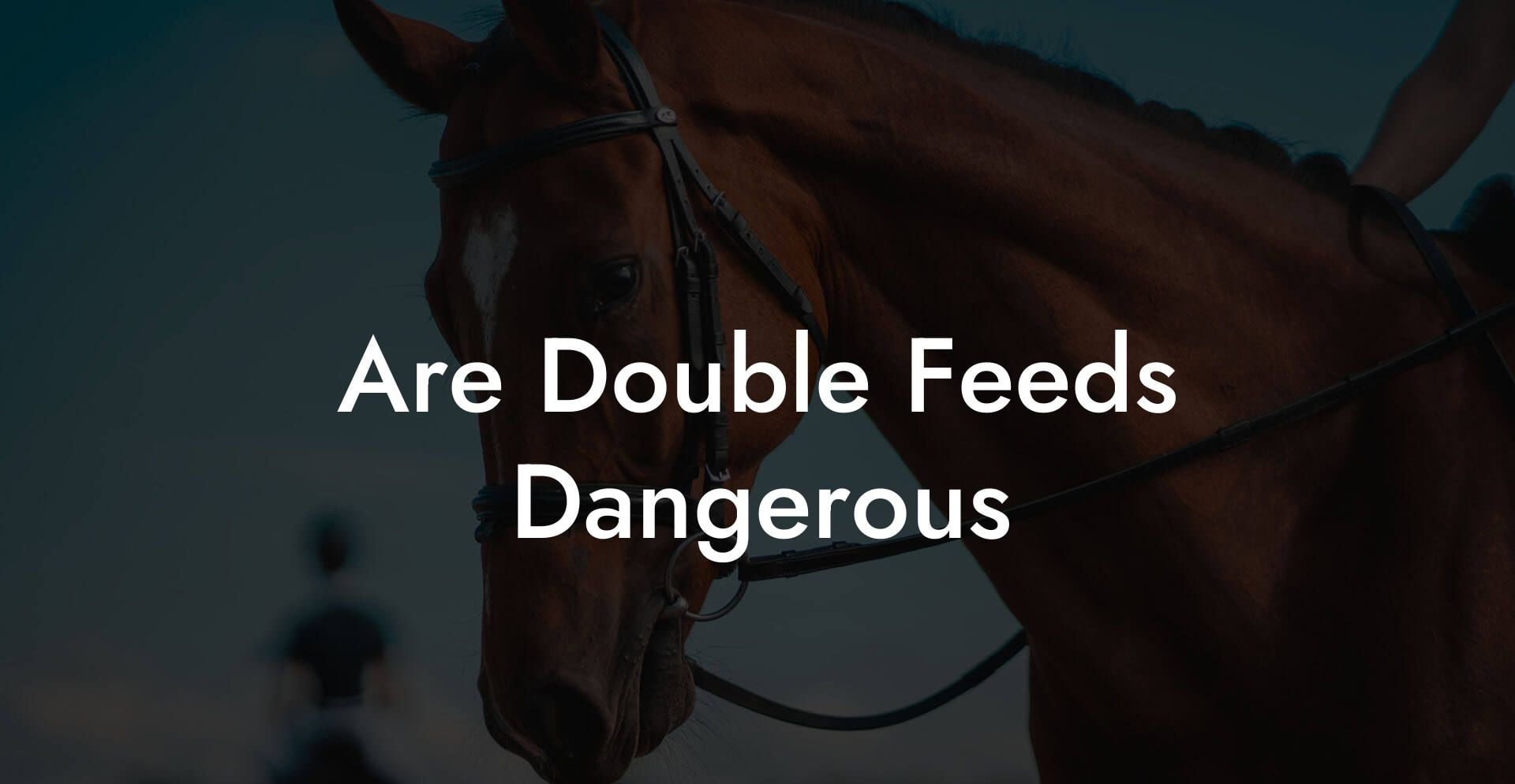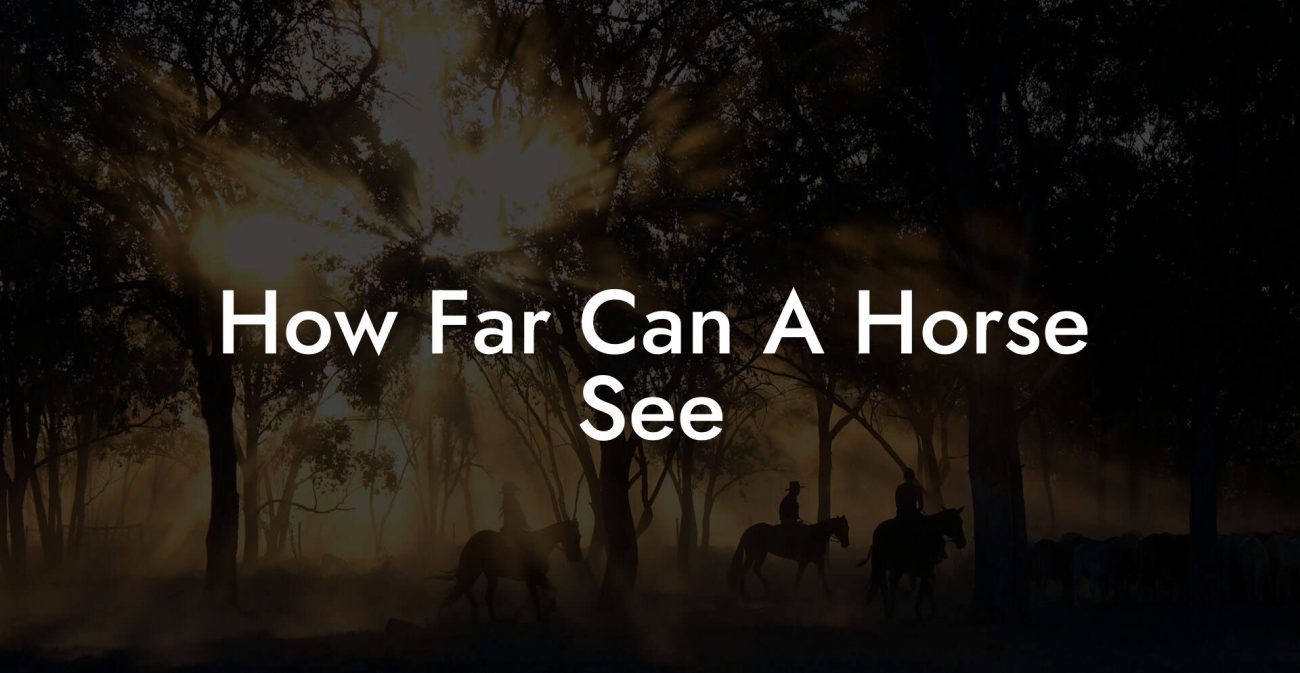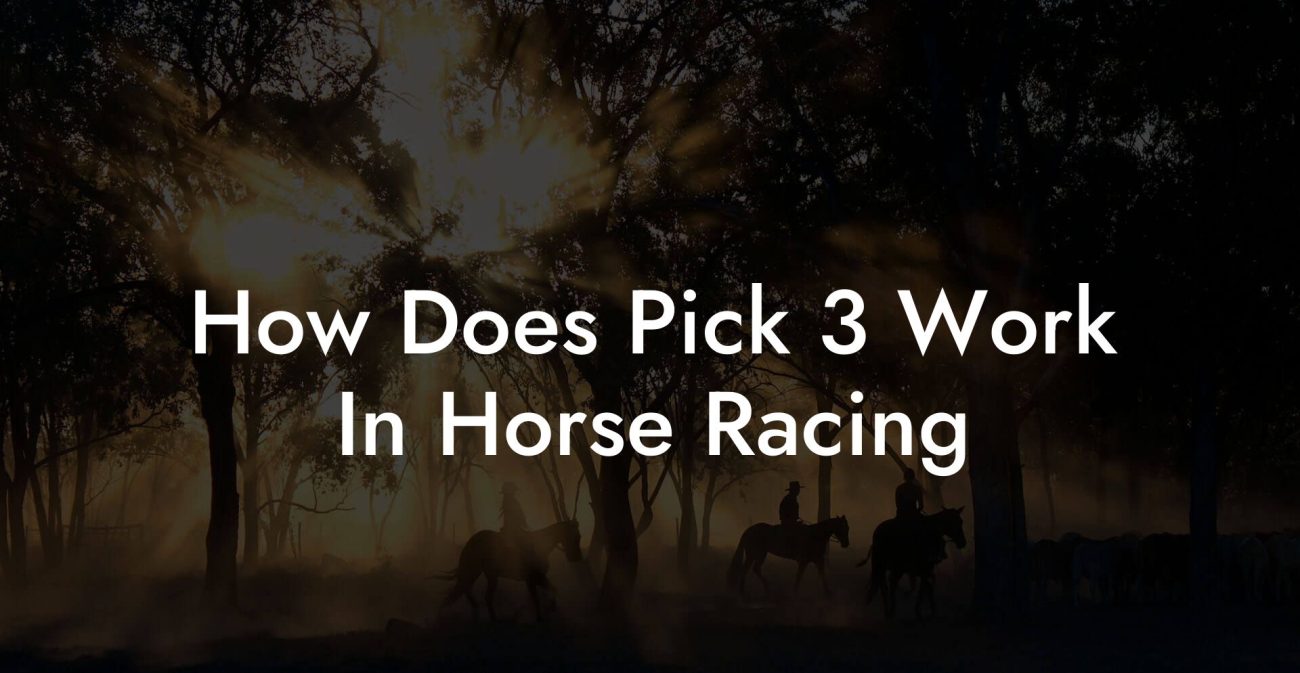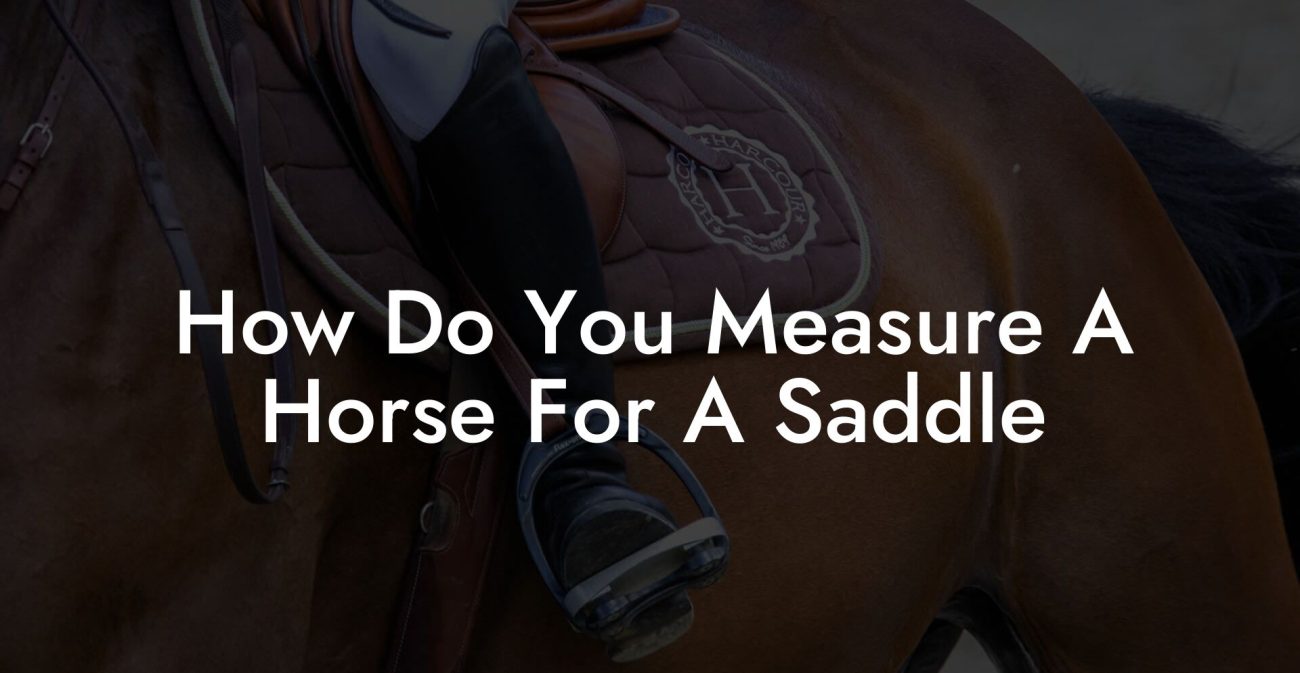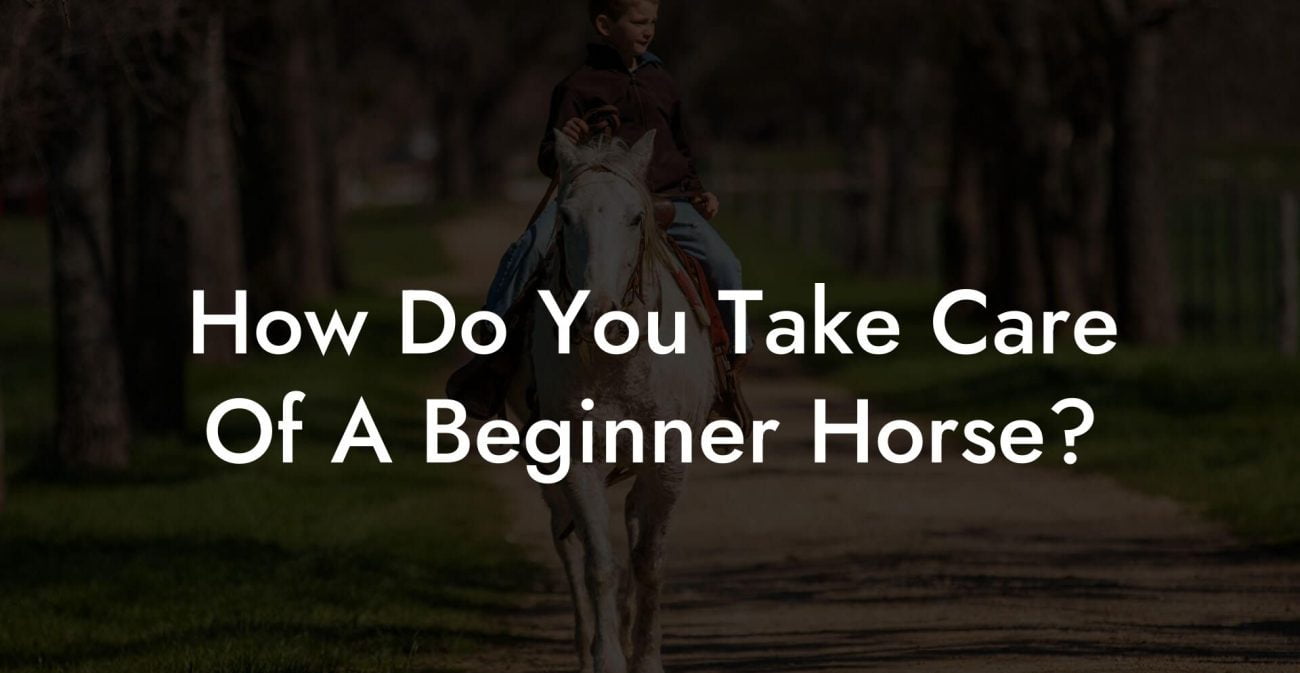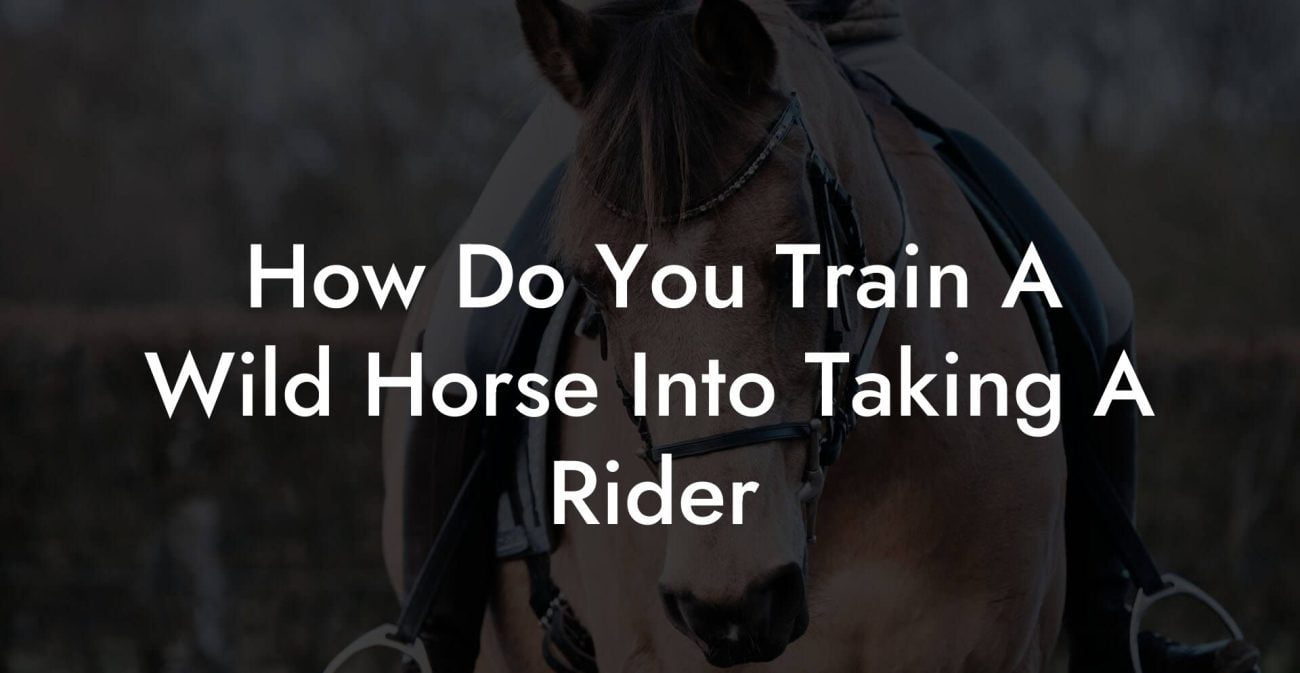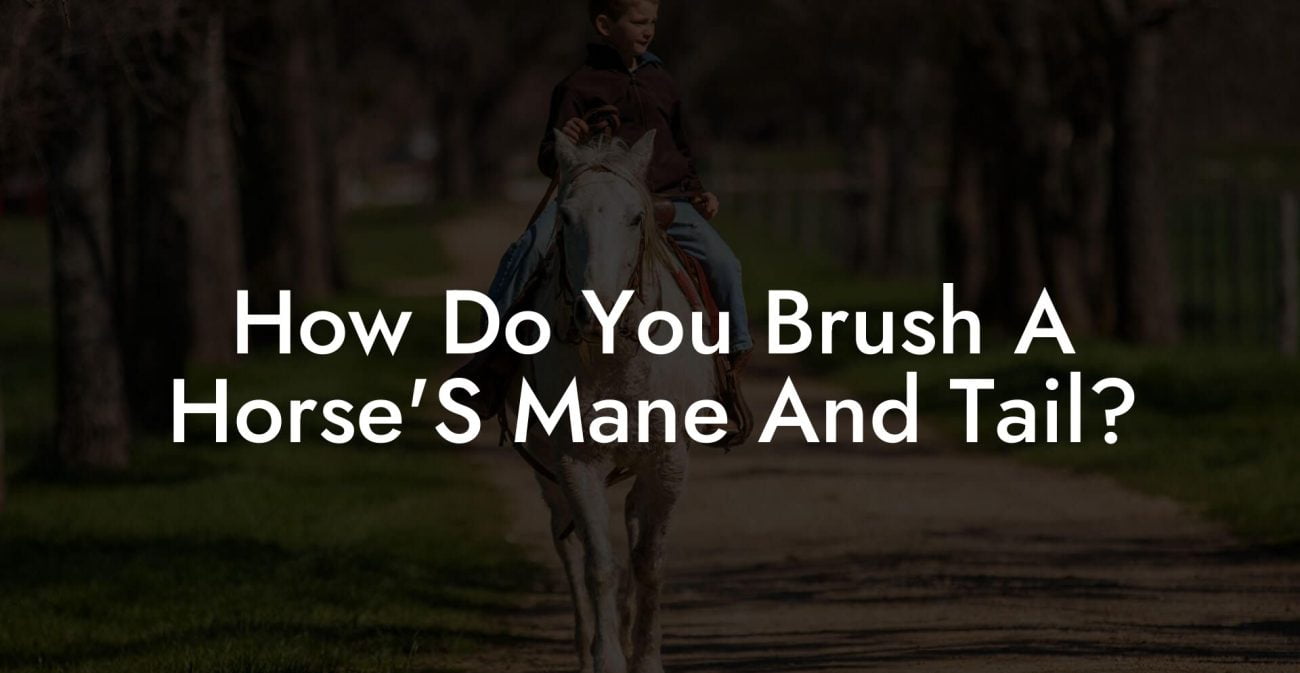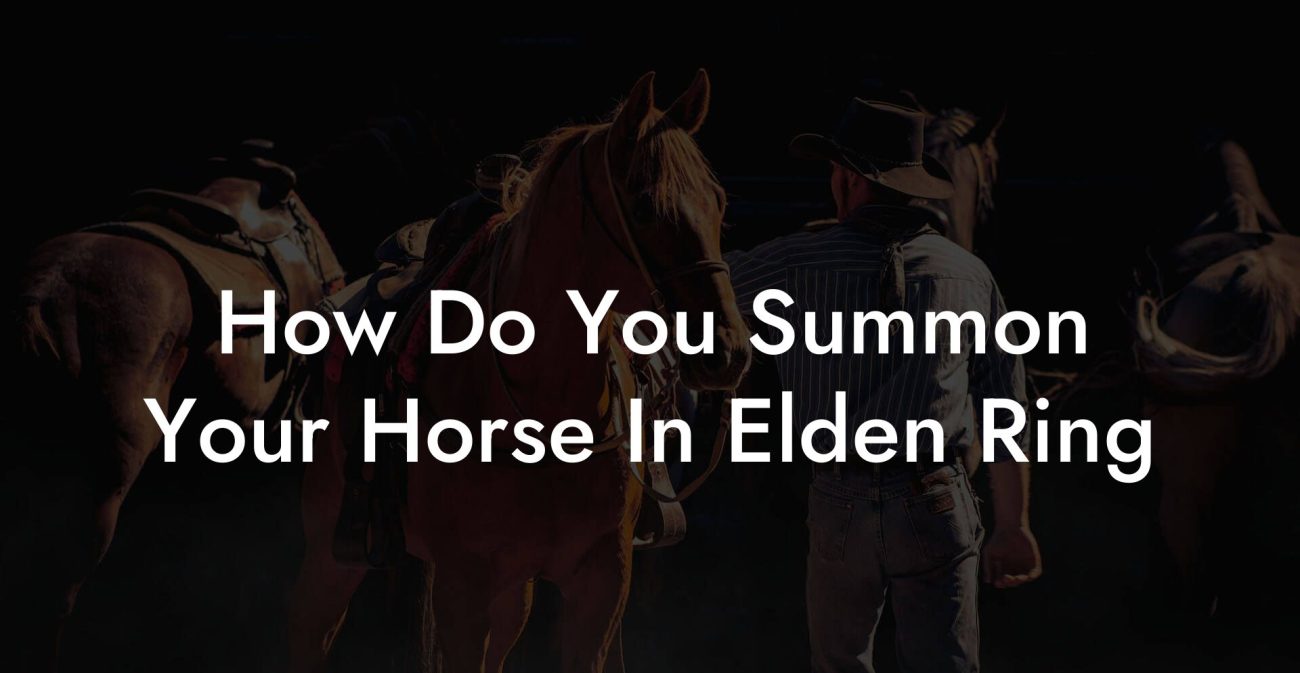Picture yourself in a world where managing your horse's nutrition feels as natural as scrolling through your favorite social feed, except instead of double-taps, you’re double-checking feed rations. “Are Double Feeds Dangerous?” might sound like a headline from a doomsday equestrian newsletter, but in reality, it’s a question that matters greatly for modern horse owners striving for optimal health and performance while keeping things chill. Whether you’re a Gen‑Z equestrian or a millennial riding into horse care with a mindset fueled by sustainability and academic research on TikTok, we’re here to break it all down in an engaging, down‑to‑earth style.
Quick Links to Useful Sections
- Understanding Double Feeds: What Does It Really Mean?
- The Science Behind Double Feeding Your Horse
- Potential Pitfalls: Are Double Feeds Dangerous?
- Nutritional Imbalances and Overfeeding
- Digestive Upsets and Colic
- Laminitis Risks
- Behavioral and Metabolic Issues
- Benefits of Double Feeding When Done Right
- Optimizing Energy Levels
- Customizing Nutritional Needs
- Supporting Recovery and Performance
- How to Safely Integrate Double Feeds Into Your Horse’s Diet
- 1. Know Your Horse’s Daily Caloric Needs
- 2. Introduce Dietary Changes Gradually
- 3. Monitor Your Horse’s Condition Closely
- 4. Balance Nutrient Profiles
- 5. Timing Is Everything
- Double Feed Management: A Deep Dive Into Practical Tips and Tricks
- Measure Accurately
- Mix Strategically
- Create a Feeding Schedule
- Adjust Based on Activity Level
- Consult Regularly with Equine Professionals
- Case Studies: Real-Life Experiences With Double Feeds
- The Cautious Champion
- The Weekend Warrior
- The Metabolic Maestro
- Resources and Community Support: Your Next Steps
- Embracing a Balanced Approach to Equine Nutrition
- FAQs: Your Double Feed Questions Answered
- Your Journey to Empowered Equine Nutrition
Understanding Double Feeds: What Does It Really Mean?
When we talk about “double feeds” in the context of horse nutrition, we’re referring to the practice of providing multiple rations or types of feed within the same day. In many equine circles, this typically means combining forage (like hay or pasture) with a supplementary concentrate (think grain, pellets, or fortified feed) in a way that may unintentionally replicate excess calories or imbalances.
With the rise of meticulously managed feeding schedules, horse owners are increasingly aware that the timing, type, and amount of feed provided can significantly influence your horse’s digestion, metabolism, and overall well-being. While double feeding isn’t inherently “bad,” the strategy’s success hinges on understanding both the benefits and possible pitfalls behind offering multiple feed types in a day.
Double feeds can sometimes be a lifesaver, ensuring horses get enough energy during performance seasons or recovery periods, but they can also lead to issues like digestive upset, weight gain, or laminitis if mismanaged. The key lies in knowing how to balance those feeds, their calorie density, nutrient profiles, and timing. In essence, it’s as much an art as it is a science, much like curating the perfect aesthetic for your Insta feed, with every detail counting.
The Science Behind Double Feeding Your Horse
Delving into the science of double feeding, we realize that a horse’s digestive system is a marvel of evolutionary engineering. Horses are designed to graze constantly, and their gastrointestinal tract (especially the hindgut) is finely tuned to handle a steady stream of forage. When you introduce a double feed system, you’re essentially altering this natural rhythm.
Research in equine nutrition shows that sudden shifts or imbalances in feeding type, like combining high-fiber forage with grain-based concentrates, can upset the delicate balance of microbes in the hindgut. This imbalance may lead to problems such as colic, diarrhea, or even laminitis, a potentially life‐threatening hoof condition.
Consider your horse’s gut as a finely balanced ecosystem. In a grazing scenario, hay and pasture provide a slow, steady release of energy. However, when you introduce a second feed that’s high in carbohydrates, you might trigger a cascade of digestive changes. Starch rapidly ferments in the hindgut, potentially leading to excessive gas, bloating, and acidic conditions. The key is to understand that your horse’s digestive system isn’t built for fast-food style double servings, it thrives on balance and consistency.
But hey, if you’re the type who loves experimenting with fusion food trends, the same principles apply when experimenting with feeds, do your homework, monitor your horse’s responses, and adjust accordingly.
Potential Pitfalls: Are Double Feeds Dangerous?
When it comes to double feeds, the answer isn’t a straightforward “yes” or “no.” Instead, it’s about context. Let’s explore the potential dangers alongside the benefits so you can make an informed decision:
Nutritional Imbalances and Overfeeding
One of the most significant risks associated with double feeding is unintentional overfeeding. When you offer multiple rations throughout the day, it becomes easier to exceed your horse’s caloric needs. Overfeeding can lead to weight gain, metabolic disorders, and even insulin resistance. For those of us who obsess over macros and nutrition on social media, think of it as adding too many filters, the result is an overexposed, unhealthy picture.
Digestive Upsets and Colic
A sudden influx of different feed sources can disrupt the delicate balance in the hindgut. Colic, a common term in horse care referring to severe abdominal pain, can be triggered by rapid dietary changes. When your horse’s gut flora is thrown off balance, it can result in gas buildup, bloating, and painful spasms in the intestinal tract. Colic isn’t just a buzzword; it’s a serious condition that can require veterinary attention, and in extreme cases, surgery.
Laminitis Risks
Laminitis, an inflammation of the tissues (laminae) bonding the hoof wall to the pedal bone, is a well-known but complex condition. Diets high in non-structural carbohydrates, often a result of feeding too many concentrates along with hay, can lead to laminitis. The sudden spike in glucose levels affects insulin sensitivity, which in turn can prompt the inflammatory responses leading to laminitis, a condition that no horse owner wants to contend with.
Behavioral and Metabolic Issues
Horses, like many of us, have unique metabolisms and temperaments. A feeding strategy that doesn’t consider these individual differences might lead not only to physical problems but also behavioral issues. Increased feeding frequencies can sometimes cause anxiety and disrupt natural grazing behaviors, which are essential for mental and digestive health.
So, while double feeds can offer targeted energy boosts, the potential dangers underscore the need for a balanced approach. The bottom line? Know your horse, understand their specific nutritional needs, and adjust the feeding plan in a measured, thoughtful way.
Benefits of Double Feeding When Done Right
Before you hit the panic button, let’s acknowledge the flipside. When executed correctly, double feeding can be a strategic tool in a horse owner’s nutritional arsenal.
Optimizing Energy Levels
For sport horses, working horses, or those recovering from injury, timing is everything. Strategically timed double feeds can provide a quick energy burst when needed, say before a competition or strenuous workout, without compromising the overall nutritional balance. Think of it as having your pre-workout snack while still fueling up on a steady, long-term feed like hay.
Customizing Nutritional Needs
Every horse is unique, and so are their dietary requirements. Younger, more active horses might benefit from a slightly higher energy intake through double feeds, while older or less active horses might need a more conservative approach. Having the option to customize the diet by adjusting the ratio of forage to concentrate allows you to cater specifically to your horse’s needs, almost like customizing a Spotify playlist for their daily workout.
Supporting Recovery and Performance
In cases where horses have undergone strenuous training or are recovering from injuries, additional energy sources might be essential for tissue repair and overall recovery. A well-planned double feed can act as both a recovery aid and a performance enhancer, offering the extra nutrients necessary for quick healing and sustained energy.
It’s all about the delicate dance between providing sufficient energy and maintaining balance, a challenge that modern equestrians tackle with the same creativity found in our favorite viral DIY hacks.
How to Safely Integrate Double Feeds Into Your Horse’s Diet
The idea of double feeding shouldn’t be dismissed outright, but caution is key. Here are practical guidelines and best practices to help you integrate double feeds safely:
1. Know Your Horse’s Daily Caloric Needs
Just as you’d calculate your daily macro intake, start by assessing your horse’s caloric requirements. Factors such as breed, age, weight, activity level, and metabolism all play a role. Consulting with an equine nutritionist can provide you with a tailored plan that takes your horse’s unique needs into account.
2. Introduce Dietary Changes Gradually
Rapid changes in feed type or schedule are a recipe for digestive upsets. When implementing a double feed strategy, introduce any new feed gradually over the course of several days to weeks. Mixing a small portion of the concentrate with the regular forage can help your horse’s gut adapt slowly.
3. Monitor Your Horse’s Condition Closely
Keep a detailed log of changes in behavior, digestion, performance, and weight. Look out for signs of colic, such as restlessness, pawing, or a decline in performance. Regular monitoring also helps ensure that your horse isn’t consuming more calories than needed, which could lead to obesity.
4. Balance Nutrient Profiles
Work with a vet or equine nutritionist to ensure that your horse’s diet remains balanced. Understand the differences in nutrient profiles between forages and concentrates. An optimal double feed should complement rather than contradict each part of the diet.
5. Timing Is Everything
Strategically time the feeds to align with your horse’s daily routine. If performed before training sessions or competitions, a double feed can provide an effective energy boost without leading to long-term overfeeding. Avoid feeding large amounts late in the day, especially if your horse tends to be less active at night.
These steps aren’t just a checklist; they’re your playbook for ensuring that any changes to your horse’s feeding regimen are safe, effective, and tailored to their individual needs.
Double Feed Management: A Deep Dive Into Practical Tips and Tricks
Let’s get hands‑on with some practical tips that modern horse owners can implement to keep double feeding on track:
Measure Accurately
It might seem obvious, but precise measurement of feed portions is crucial. In today’s world of smart gadgets, consider using digital scales or feeding apps that track the amount and caloric intake. Mis-measured feed portions are a common pitfall leading to dietary imbalances.
Mix Strategically
For horses who are used to grazing, mixing a small percentage of concentrate with their regular forage can introduce the concept of double feeds gently. Gradually increase the ratio only after ensuring that your horse’s digestion adapts well to the new regimen.
Create a Feeding Schedule
An organized feeding schedule is essential. Keep detailed records, and set reminders on your phone or a digital calendar. This not only helps avoid overfeeding but also ensures consistency in your horse’s dietary routine. Consistency is king, much like your favorite streaming series, a predictable schedule keeps your audience (or in this case, your horse) coming back for more.
Adjust Based on Activity Level
Your horse’s energy demands can fluctuate based on daily activities. On days with intense training or long rides, a slightly elevated energy feed may be beneficial. Conversely, on rest days, steer towards a lighter ration. Being in tune with your horse’s activity levels is as important as knowing when to hit pause on your binge-watching sessions.
Consult Regularly with Equine Professionals
Whether that’s through scheduled veterinary check-ups or consultations with an equine nutritionist, regular professional input is invaluable. They can help adjust the feeding regimen based on your horse’s current health status and performance metrics. Think of it as having a coach for your horse’s dietary game plan.
With these actionable tips, you’re better equipped to decide if double feeding can work in your stable, and more importantly, how to implement it without compromising your horse’s health.
Case Studies: Real-Life Experiences With Double Feeds
Nothing drives a point home like real-world examples. Here are a few stories from horse owners who have navigated the complex world of double feeds, each story a lesson, a reminder that while challenges exist, careful management leads to success.
The Cautious Champion
Meet Zoe, a young trainer who manages a small but competitive stable. Concerned about her champion’s energy levels during dressage routines, Zoe experimented with a double feed strategy, integrating a measured dose of concentrate an hour before practice while keeping the staple hay ration consistent. Initially, minor digestive discomfort prompted her to consult a nutritionist. With professional tweaking of portion sizes and timing, her champion’s performance soared while maintaining a sleek, lean physique. Zoe’s story is a testament to the power of careful monitoring and adjustment.
The Weekend Warrior
Then there’s Marcus, a busy millennial balancing a high-octane work life with weekend trail rides. Marcus opted for a two-feed system to jumpstart energy on his off days. However, after a bout of mild colic, he learned the importance of gradual feed integration and ensuring that extra concentrate didn’t overshadow essential forage. With the help of his local equine vet and a few tweaks to his schedule, Marcus found the sweet spot between energy and safety, enabling him to enjoy both his adventures and his online hobby of sharing epic riding moments.
The Metabolic Maestro
Finally, we have Lila, an avid equestrian who discovered that her aging mare required a very nuanced feeding regimen. The mare’s metabolic rate had slowed, and simply doubling up on meals was leading to unexpected weight gain and early signs of laminitis. Lila’s solution involved not only reducing the overall calorie count but also integrating metabolically friendly feeds. She carefully balanced fiber with low-starch, high-fat supplements, an approach that stabilized her mare’s insulin sensitivity while keeping her energy levels in check. Lila’s proactive approach highlights the importance of tailoring double feed strategies not just by age or activity, but by metabolism as well.
These case studies serve as proof that while the double feed concept carries its risks, with thoughtful planning, professional consultation, and careful observation, it can be part of a successful feeding strategy.
Resources and Community Support: Your Next Steps
Navigating the world of equine nutrition can feel overwhelming, especially when balancing multiple feeds. Thankfully, there’s a robust community of experts, online forums, and professional networks ready to support you every step of the way.
Start by reaching out to equine nutritionists or vets who specialize in managing diet plans for horses with unique needs. Websites such as Equine Nutrition Council and reputable feed manufacturers often offer detailed guidelines and research articles. Don’t forget social media, Instagram, TikTok, and Facebook groups are teeming with fellow enthusiasts sharing their successes and challenges in real time.
Consider joining local equestrian clubs or online webinars where you can ask questions, share your experiences, and learn from experts who’ve successfully integrated double feeds without compromising horse health. Just as collaborations push creative boundaries in music and art, community support can help expand the horizons of your equine management strategies.
Your next steps might also include investing in digital tools that track feed consumption and health stats over time, technology that bridges traditional care with modern convenience. Whether you’re new to these practices or a seasoned pro, continuous learning and networking in the equine community are key to staying ahead of potential pitfalls.
Embracing a Balanced Approach to Equine Nutrition
At the heart of every successful horse management strategy lies balance. Double feeds, when implemented with care, offer a pathway to customizing your horse’s nutritional intake, but they demand respect for the intricate biological rhythms of your equine companion. With careful planning, the right blend of forage and concentrate, and periodic reassessment, you can mitigate risks while harnessing the benefits.
Remember, your goal is to empower your horse with the energy and nutrients it needs to perform at its best while minimizing the dangers of overfeeding. This process is very much like curating a perfectly balanced playlist: every track (or in this case, every feed) plays a crucial role in the overall harmony.
As you embark on refining your horse’s diet, stay curious and open to adjustments. Your horse isn’t just a partner in your daily routine, it’s a living, breathing testament to the importance of personalized care in today’s fast-paced world.
FAQs: Your Double Feed Questions Answered
Here are some frequently asked questions about double feeds and their impact on horse health:
1. What exactly are double feeds in a horse feeding program?
Double feeds refer to the practice of offering two different types or rations of feed, often combining forage with a concentrate, within the same day to meet specific energy requirements.
2. Can double feeds lead to digestive problems in horses?
Yes, if not managed carefully, the sudden introduction or imbalance of feed types can disrupt gut flora, potentially causing colic, bloating, or other digestive issues.
3. How can I prevent overfeeding when using a double feed system?
You can avoid overfeeding by accurately measuring portions, understanding your horse’s daily caloric needs, and monitoring its weight and condition regularly.
4. What role does timing play in the effectiveness of double feeds?
Timing is critical. Strategically spacing the feeds ensures your horse gets an energy boost when needed without overwhelming its digestive system, especially around periods of intense exercise.
5. Can double feeding be adjusted for horses with metabolic issues?
Absolutely. For horses with slower metabolisms or conditions like insulin resistance, work closely with a nutritionist to tailor the feed types and timing to avoid excessive calorie intake while still meeting energy needs.
6. How do I know if my horse is responding well to a double feed regimen?
Signs of a well-adjusted regimen include stable weight, consistent energy levels, normal digestive function, and a lack of behavioral distress. Any signs of discomfort or colic should prompt a review of the feeding plan.
7. Is it safe to mix forage and concentrates together?
Mixing should be done cautiously. It’s best to introduce new feed combinations slowly and monitor your horse’s response to avoid digestive upset.
8. Can I implement double feeds on my own, or should I consult a professional?
While many horse owners successfully experiment with double feeds, consulting with an equine nutritionist or veterinarian is highly recommended to create a plan tailored to your horse’s specific needs.
Your Journey to Empowered Equine Nutrition
In the end, successful horse care is about balance, thoughtful planning, and embracing the journey of continuous learning. Double feeds can be a useful strategy, if managed with precision and care, allowing you to provide the necessary energy boosts while keeping your horse’s overall nutrition in harmony.
By carefully monitoring your horse’s performance, consulting with experts, and adjusting feeding regimens based on its unique needs, you empower yourself with the knowledge and tools to make sound decisions. Embrace a future where nutrition and care go hand in hand with modern equine management practices, and where every feeding decision contributes to the longevity and vitality of your horse.
Whether you’re scrolling through the latest equestrian trends online or engaging in spirited conversations with fellow horse enthusiasts, remember that a well-informed approach to double feeds can unlock the potential for healthier, happier horses. Your journey to optimized equine nutrition begins now, gear up, get informed, and ride confidently into a future where your horse thrives.

